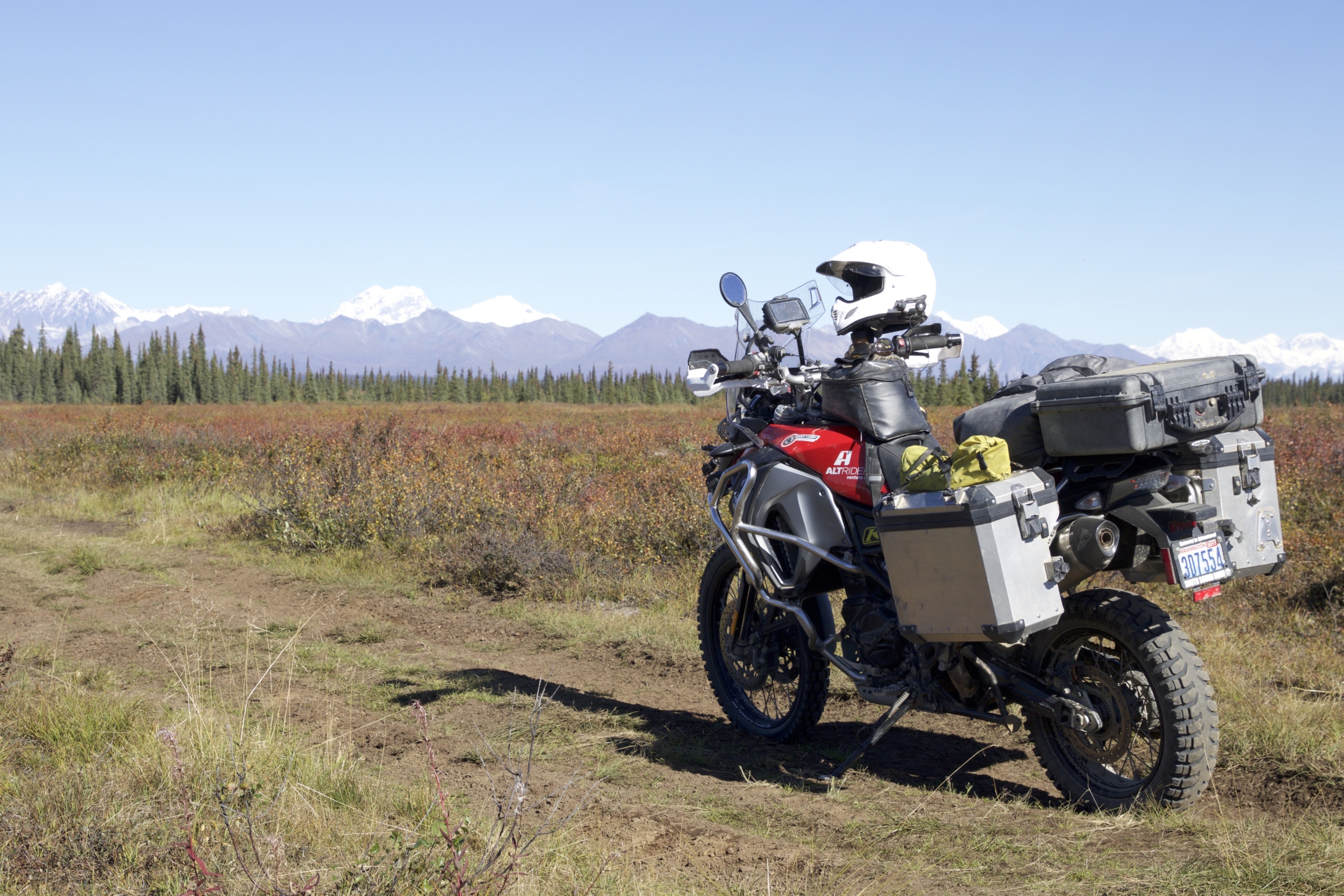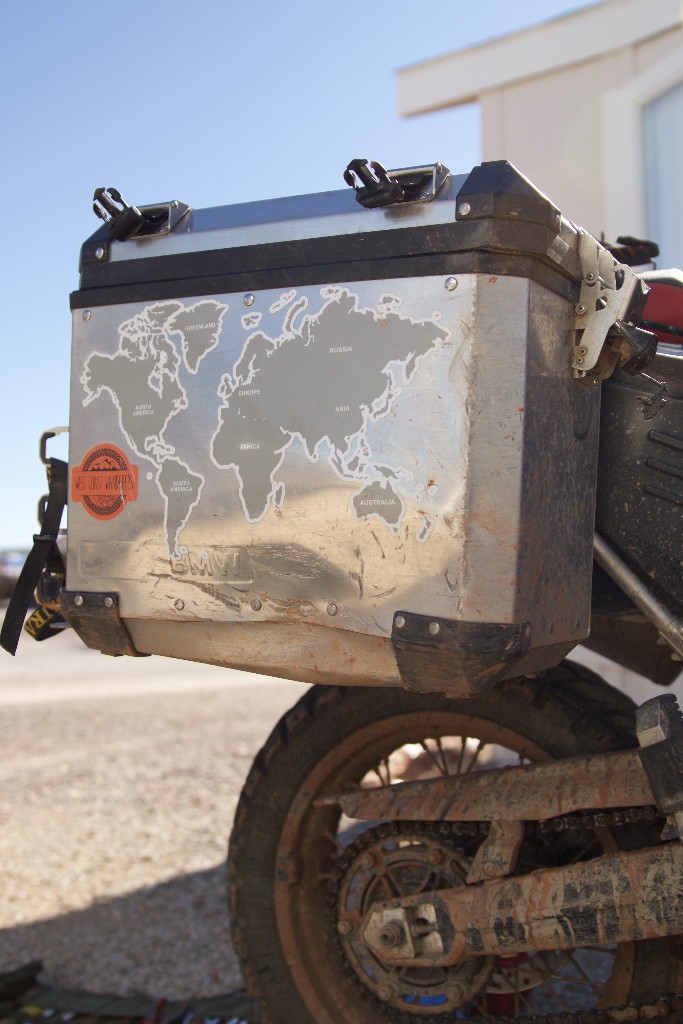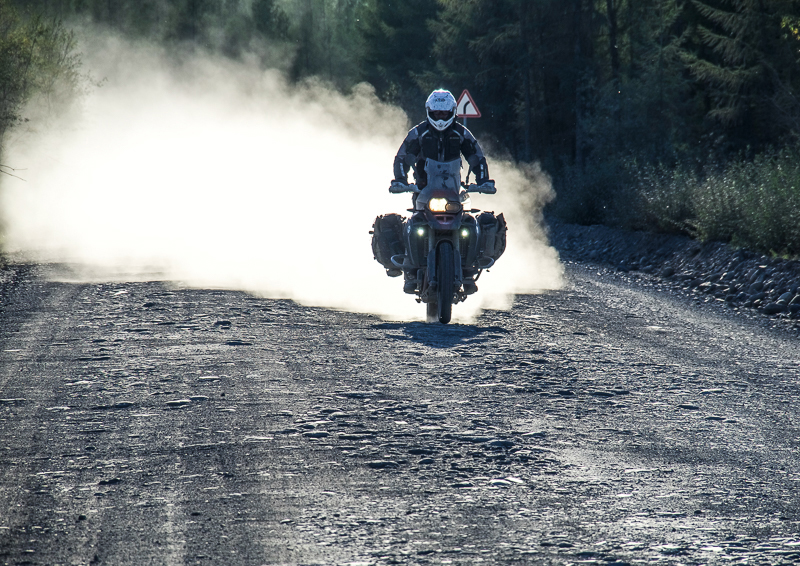Editor’s Note: This post was previously published on SheADV.com
One of the most important gear items to have on your bike is sturdy, waterproof luggage. Your gear is useless if it’s exposed to the extreme elements of riding unprotected. Over the course of two years, I tried three different motorcycle luggage setups: one was a set of hard cases, the other two were soft. As with any gear item, nothing is perfect. Both setups had pros and cons, and you need to decide for yourself what you can compromise on and what are must-haves. Below is my personal review on what was great and not so great about each.
HARD CASE PANNIERS
Pros:
- Undamaged hard cases are—for the most part—water, theft, and tamper-proof when locked and require far less latching and buckling down to make them that way.
- Valuable contents like cameras, laptops, and that fine bottle of Mezcal you picked up in Mexico are much better protected inside hard cases.
- Most hard cases have a large lid that opens out of your way and offers convenient light to easily see inside for trouble-free access.
- In the event of dropping your bike (which never happens, of course), hard case panniers can help keep that heavy sucker off your leg.
- They provide a great leverage angle for when you need to lift that dropped bike off the ground (which is seldom, right?).
- If you like collecting bragging-rights stickers, the hard, flat sides of aluminum panniers are great for showcasing all the cool places you and your bike have been.
- In camp, hard side cases make a great table or seat.
- They look super rad in your round-the-world souvenir emporium—especially with all those stickers.

Cons:
- Damaged hard cases can mean a permanent loss in their value as being water, theft, and tamper-proof if the lid doesn’t close properly.
- If the damage is bad enough, it may impact the volume and therefore the amount of gear you can fit inside.
- Removing hard case panniers from luggage racks—especially when they are jammed full of gear—can be a frustrating experience.
- They are usually heavier than soft bags and difficult to carry into hotel rooms, requiring at least two trips. If you’re staying in places with no elevators and your room is on the fourth floor, you’ll get more exercise than you want.
- If you can’t get into the case due to a broken, lost, or rusted key, or from grit jammed inside the lock, you can’t get to your stuff.
- Hitting something with your hard case luggage like a concrete blockade, or god forbid, a vehicle, person, or animal, the kinetic energy is greater from the non-absorbing impact.
- When (not if) a hard case hits you in the back of your leg or ankle on tricky terrain, you’ll either be glad you invested $500 in plastic riding boots or you’ll be purchasing a pair at the next available opportunity— after you recover from your broken leg or torn Achilles tendon.


SOFT CASE PANNIERS
Pros:
- Soft bags are almost always lighter in weight, which not only helps with overall bike weight, but also allows for easier carries into restaurants, hotel rooms, or over to the campfire.
- Removing soft bags from luggage racks is far easier.
- I prefer the lower-profile look of the soft luggage, as long as the straps are tidy. Unfurled strapping and unclipped buckles look ridiculous flapping in the wind. And no rider wants to look ridiculous.
- With proper strapping expertise, bags can shrink or expand in volume, adjusting to the amount of gear inside.
- Grazing obstacles has far less force, allowing you to maintain control of your bike.
- Getting hit in the back of the leg with a soft bag usually has less severe outcomes. They will also squish around your leg, should it get caught underneath. (But you should still invest in high-top riding boots.)
- There are no keys required for soft luggage unless you use cable-locking systems. Therefore, there is virtually no scenario in which you won’t be able to access items inside.
- When you buy high-quality soft bags, they are almost indestructible. So when you drop that bike, soft bags are more supple and don’t get damaged as easily.
Cons:
- Care is needed to pack breakable items closer to the bike’s frame or wrapped inside of clothing to avoid breakage if the bike goes down. Otherwise, all your clothing now smells like Mezcal.
- Given enough time, soft bags can easily be cut open by thieves (though it’s not as easy as it may seem if you buy good bags).
- Securing soft bags to your bike and against theft means buying extra cables and locks.
- Using cables and locks to secure your gear is time-consuming and not entirely foolproof.
- Soft bags are usually harder to see into and have smaller openings for getting both hands in. They can be a fussing nightmare. (I just want my flip-flops but they’re under two rolls of fabric and five buckles!)
- Some soft bags don’t come with waterproof liners; factor them in as an additional cost and weight that takes up extra room.
- Lower-quality soft bags will get trashed when the bike hits the ground. (I know, that’s rare).
- There is less leverage for picking up your bike when soft bags squish.
- Stickers have no home on soft bags. You must resort to attaching them all over your bike.

Our No Compromise Clause: We carefully screen all contributors to make sure they are independent and impartial. We never have and never will accept advertorial, and we do not allow advertising to influence our product or destination reviews.

